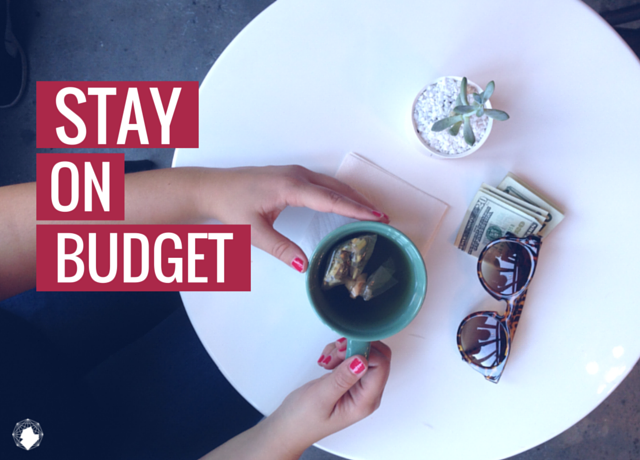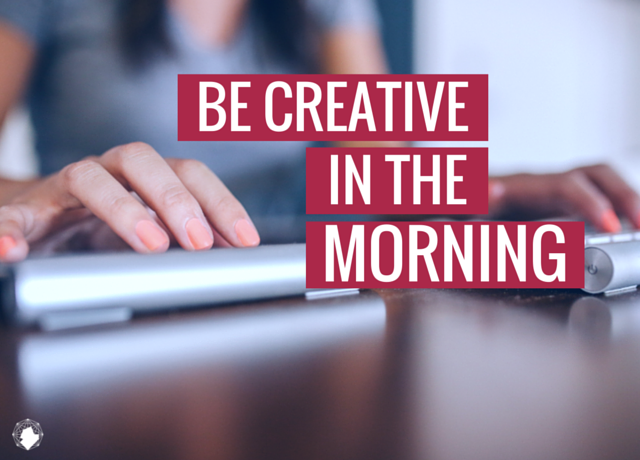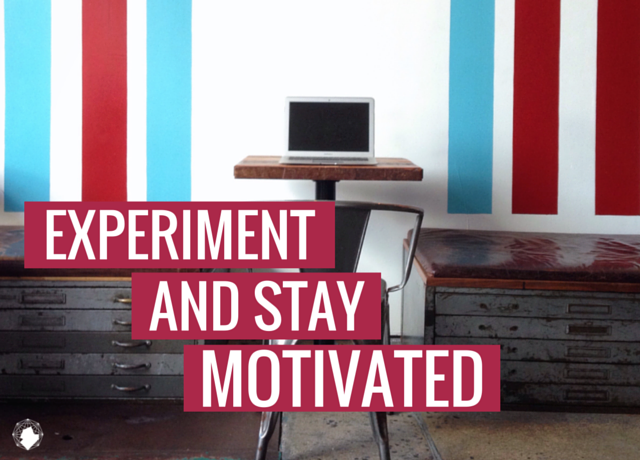This post was contibuted by Emelina Spinelli who also authored 10 Tips I Learned Art Directing My First Photo Shoot.
Most creatives jump into their industry with glowing eyes. They see themselves as art directors or creative directors, and think it’s easy to get there. Besides the “big name” title there are some serious technical chops and incredible people skills that creative directors have in common.

Working your way from a junior designer to creative director probably won’t happen overnight. Using the tips and habits in this article will prepare you for all sorts of creative-goodness and send you on your way up the success ladder.
#1 Always Do Your Best Work, Put Your Best Foot Forward
Learn to develop your own creative genius. Push yourself constantly to do your best work, and better.
Always enter a project with a great attitude. I know this may sound cliché but there’s nothing better than putting your best energy into every project you do—regardless of how small the project may be.
Use every project as a means to hone your skill.
From a personal growth standpoint, a logo for a family friend and a website for a more pronounced client should receive the same amount of gumption and enthusiasm. Be excited for every project that walks through your door. You learn so much from personal experience.
The only way to get better is to jump into projects, create more often and challenge yourself.
#2 Understand the Brand and the Audience
Creative directors aren’t just well… creative. They also serve a client-facing role. Their goal is to fully understand the client’s needs and then set their epic creative team up for success.
Take care in understanding branding, what it is and why it’s important. Branding isn’t just a logo, or a reputation. Branding is really the act of creating a strategy and direction. This strategy should trigger an emotional response in a specific audience.
Your goal as the creative, is to understand that strategy and then communicate it to your team—as best you can. Creative directors learn the traits and characteristics of the brand and the audience before diving into the design on any project.
You can pick up a free brand template. It may help your client be more clear in communicating with you.
The best way to start off with the right foot is to develop a client brief. Create an intake process so you may scale your projects and expedite communication and understanding the clients’ needs.
#3 Exercise Your Creative Muscle
Don’t repeat your creative ideas (until you develop a specific creative style for which clients seek you out).
There’s nothing inherently wrong with repeating ideas or “quoting yourself.” It’s just that if you consistently repeat ideas, you’ll make a habit of doing such. This can inhibit your creativity. Rather than repeating the same creativity, break the mold. Express ideas that you wouldn’t normally do.
Exercise your creative muscle by constantly breaking the rules you’ve set for creativity in your own head. It doesn’t need to look “perfect.”
I’ve come across a lot of “perfectionists” in the creative field. And, I must admit, I was one too at one point. Perfectionism is an excuse for procrastination. People can say that if the idea or process isn’t perfect, isn’t ready to publish.
In this state of mind, the idea will never be ready. And this is probably the primary reason why many creative ideas don’t ship fast enough… or at all. Don’t make the mistake of getting stuck in the whirl-pool of perfectionism.
No one makes money from ideas that sit behind the wall of “it’s not perfect yet, let’s work on it for another year.”
Make something— un-perfect. Risk more and bring crazier ideas to the table. You can always scale back later. Innovation doesn’t come from thinking small, thinking safe, or preventing a project from launching by continually working on it.
Innovation develops from stretching boundaries like a rubber band, taking risks and being willing to fail. Often, if you are willing to fail, you are dually willing to succeed and make something new.
Name of the game: think big, push boundaries, publish often.
#4 Stay on Budget
Understand the business side of things. Spend time learning about marketing, social media marketing and other creative tactics. You’ll make more targeted decisions with a greater depth of understanding.
Learn to stay lean. If you think that the project could go off budget based on the clients needs, make sure you say so and pronto. This gives you and the client the opportunity to re-think certain aspects of the project and assess priorities.
Keep the communication lines open and stay within the allocated budget. Trust me, your clients will thank you.
#5 Be a Team Player and Learn from Others
Collaboration only fuels creativity. Sharing ideas is a huge part of the creative process. It gives new perspective on your ideas, attracts improved ideas, and works out the kinks.
Learn to listen. Creative directors have great communication skills that are useful in interpersonal skills as well as creative.
Take care in giving encouragement like it’s your job. Constructive criticism is to be expected in the creative field. However, people actually learn faster and work more effectively with consistent positive reinforcement.
Make sure to tell your team regularly what they’re doing well. Express how their hard work contributes to the success of the project. Ask them what support they need to be successful and be the leader that inspires them to push themselves to do their very best work. People will do wonders in the creative world when they feel they are important to the success of the project.
Dale Carnegie’s book “How to Win Friends and Influence People” is a must read for anyone managing others, and participating in client-facing roles.
#6 Make a Creative Routine
There is pressure for creatives to be creative on demand. It’s expected of them. What if you could actually be creative on demand without feeling pressured or stressed?
It’s possible.
Develop a creative routine.
If you’re a creative person, you already have a strategy to be creative. Maybe you just don’t know what the formula is. Next time you’re jacked-in to your creative state, take note of what you did to get there. It’s personal and different for everyone.
Our brains are constantly looking for patterns.
You can use this to hack your brain to be creative. You start by creating certain triggers. These triggers could be drinking coffee while you do your creative work at your PC, or perhaps it’s sitting in the same corner room with the view. Maybe you like to listen to the same music whenever you’re creative.
Whatever it is, there’s a specific pattern of behavior.
You can actually jumpstart the creative flow in your head by setting up the same behaviors in order to trigger your brain into the emotional state.
I have set up a specific set of triggers myself to be creative.
I love working at cafes. I sit down in front of my Mac, with a latte or a matcha. I plug in my headphones and begin listening to some sort of dance music. For some reason, dance music helps me focus 😉 Whenever I add these elements together all at once, my brain just starts pouring with new, juicy ideas. I almost can’t write fast enough to capture them!
It’s easy for me, and it’ll be easy for you too once you put a strategy in place for yourself.
#7 Do Your Creative Work in the Morning
Our brains are most productive in the morning (when we have the most energy).
Creativity can be demanding, and mentally challenging. Make sure you tackle these projects first—in the beginning of your day. If you set your creative tasks as your first priority, you’ll notice that they are easier to accomplish, and actually take less time.
Don’t check your email in the morning, and leave your phone off (if you can help it). Remove all distractions. It’s well known that a distraction can take you off task for more than 20 minutes. Those add up, and don’t help your productivity.
Doing your creative work first thing will give your brain the breathing and thinking mental space. After a night of rest, it’s ready to run out of the gate with your best ideas. Capture them!
#8 Experiment, Play and Stay Motivated
Set aside time in your work to play. You can take that as literally as you’d like.
Creativity and inspiration expire. We must continually exercise these muscles to bring even better ideas and projects to our clients.
For me, play is pulling out a new calligraphy pen and trying my hand at writing beautiful type. Sometimes I design quotes just to practice my type skills. I even play with my food—quite literally. Sometimes I just get curious and try to write out words with kale leaves and coffee beans. My instagram has been jumping with loads of experimentation and play material.
Not all experimentation will work for your next big project. The point is to get your hands a little messy and jump outside of your comfortable box of tools. If you continue to experiment, you’ll have a larger creative knowledge base and set of “tools” to pull from in your work.
Plus, it’s just fun!
#9 Expand Your Creative Fluency + Technical Skills
All creative skills translate to the next. Your a painter? Moving into photography would only strengthen your composition and framing skills. You are in love with typography? Then try your hand at calligraphy. It’ll only give you greater understanding and skill in creating type.
Creative directors have varying technical skill-sets.
Often, they need to understand copywriting in addition to design. The copywriting skills allow them to develop and direct advertising copy with design and photography that’s on point. Understanding photography allows the directors to explain what is necessary to the photographers on the team for their next advertising shoot. The same goes for the following: design, editing, illustration, animation, app design, advertising, development and community management.
The more understanding you have for the complimentary skills, the stronger your projects will be.
#10 Meditate, Reflect and Slow Down
Ideas need breathing room.
A runner wouldn’t run for hours on end without any nutrients or breaks. They’d run for a while, then take a pit stop for a hydration and nutrients. They’d probably scarf down goo-shots or what have you and take some deep oxygenating breaths. Then, they would go back to their activity with renewed energy.
They would also have scheduled “on” and “off” days to give their body the necessary rest.
Creativity is the same.
Crunching in 12+ hour days expecting your brain to give you the best material on demand is pretty rare. Take care of yourself and your body.
Creativity comes from a well functioning brain.
Make sure you’re getting enough sleep, vitamins, and oxygen to your noggin. I’m a fan of the Bulletproof diet to keep my brain focused and I drink loads of matcha and chlorophyll to get the most action from my gray matter.
After all, Albert Einstein did say “I get my best ideas in the shower.” Our brains are always on—even if we’re just straight chillin’. In this case…showering. Our brains are always connecting ideas, thinking and making sense of our reality.
Often taking a break is just what you need to come up with that diamond of an idea.











I’m afraid I disagree. This paints a picture of, perhaps, an *ideal* Creative Director — someone you’d like to work for — but the role of CD can be as varied as the people who occupy it. Some CDs spend 100% of their time in meetings, serving as a figurehead and hardly spend time with staff; others are in the trenches more like a master stone-mason overseeing his apprentices. Some are night-owls, others are early risers. Some are stubborn as heck, and haven’t learned anything new since 1992 … but they’re great with clients. The opposite is also true — imagine a person who has encyclopedic knowledge of design methods and trends, but is a scattered nightmare and you’d never let him/her in the room with a paying client. The list goes on and on.
In my own work examining the habits of creative professionals (http://busycreator.com/9habits/) I have come to discover that there’s as much variety in the routines and rhythms of our industry practitioners as there is in the work itself. I think no one could find any ten items we have in common, let alone the exact same collection of actions.
I want encourage folks reading this to keep in mind that there is no perfectly correct way to be successful; all of us must install good habits and routines that work for us individually, and your teams, regardless of whether or not they look good in an article.
Hey Scott,
You’re right that this does paint a picture of the ideal CD, and not everyone can have all of these traits, but it’s about identifying what strengths you can own and use to your advantage, and what skills you may need to build up – just like the examples you’ve mentioned about the CD who hasn’t learned anything new since 1992.
Thanks for sharing your resource too, will have a look now.
Nice to read. Thanks a lot for sharing
Glad you enjoyed it! Thanks!!
This post is a must read for everyone.. it is really rich and i have learnt alot from it… thanks alot for sharing it.. God bless you.
Thank you so much Maurice, that’s so kind– thank you so much for reading it!!
I can related to the most of the habits listed above. It’s certainly very important to stay creative.
Glad you enjoyed the article Darshan! 😀